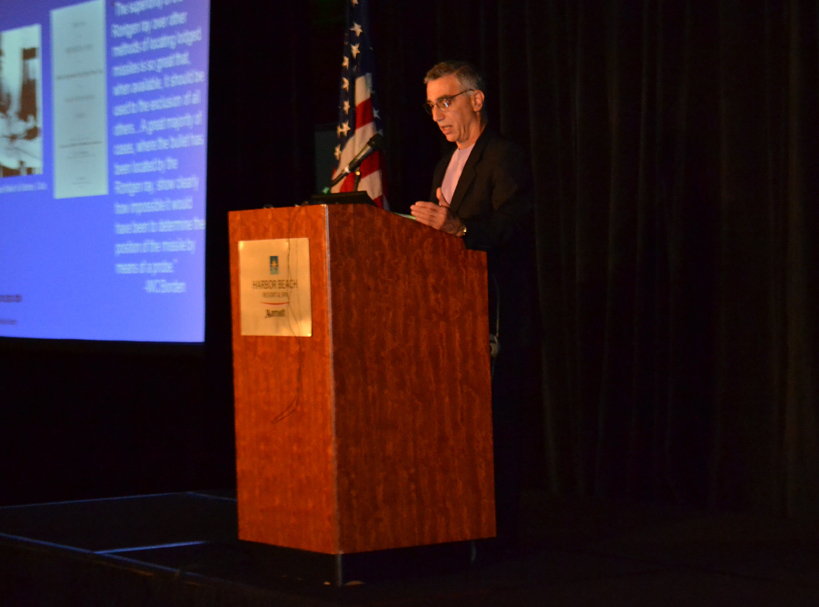Military and Civilian Partnerships for Trauma Care

At the 2012 Military Health System Research Symposium, an overriding philosophy is that strong partnerships lead to successful research. No one knows this better than Dr. Thomas Scalea, physician-in-chief of the University of Maryland Shock Trauma Center, Baltimore, Md., whose group has teamed with the U.S. military to advance the study and treatment of severe injuries in both the military and civilian sectors.
Scalea said that the military-civilian partnership over the years has yielded a tremendous amount of "cross pollination" of clinical care, in mostly trauma and critical care scenarios. What was born out of necessity on the battlefield has grown into a vital operation in saving lives daily, from bustling city streets to quiet neighborhoods, to ensure that severely wounded patients are treated as quickly as possible.
"Evacuation of casualties -- helicopter transport -- that was born in Korea and Vietnam has really morphed into the civilian sector in a big way," said Scalea, "and we are now involved in a very large discussion on who ought to be transported by ground and who should get flown -- but all of that really started in the military."
Today, Scalea's team at Maryland's Shock Trauma Center use medical concepts that originated in combat casualty care, and his tour of U.S. military operations overseas in Afghanistan has helped to shape his vision.
"The whole concept of Damage Control Resuscitation was started on the battlefield," said Scalea, "and all of that [research] has gone from the battlefield into civilian practice."
The military's system of Critical Care Air Transport, which involves transporting battlefield victims to military hospitals, has helped to define the current practice of "life-flighting" civilian patients with serious wounds to hospitals via helicopter directly from the accident scene.
Of this method Scalea said, "I really got the idea for this when I was in Afghanistan. I said, 'We can do this, but we just need to use it in a different way.'"
Tourniquets, shunts, local haemostatic dressings, and various other medical items are going from the battlefield, sometimes directly, into civilian practice. Military doctors with their invaluable experience are coming out of the Services and bringing their knowledge into the civilian sectors.
The partnership between military and civilian medical practitioners over the years has led to many breakthroughs in life-saving procedures, and the basis for this concept of early intervention was championed decades ago by the man who would eventually create Maryland's Shock Trauma Center, R. Adams Cowley.
In praising Cowley, Scalea said, "It was R.A. Cowley who came back from [the war in] Korea with the concept that injury was a 'time-sensitive' disease, and he then coined the term 'The Golden Hour.' Cowley believed that there is a 'golden hour' between life and death, and if you're critically injured, you have less than 60 minutes to live. In his mind, he already had the concept of irreversible shock."
As modern-day medicine evolves along with the strengthening of military-civilian partnerships in the field, Scalea said that two strong examples of real innovation in this partnering are comprehensive facial transplantation and reviewing genetic profiles to drive care and treatment. Both of these avenues have seen great successes recently, and he remains confident that more success stories of this unique collaboration will be seen in the not-too-distant future.














